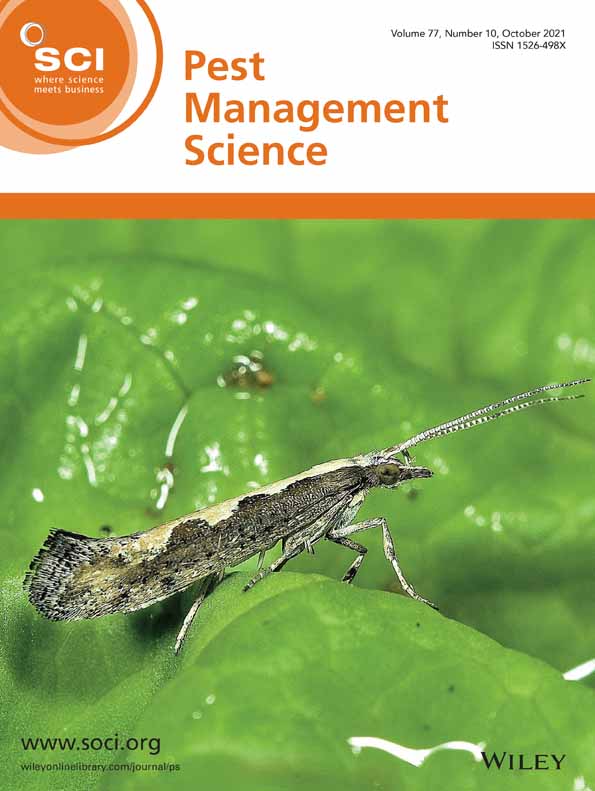Ver ítem
- xmlui.general.dspace_homeCentros Regionales y EEAsCentro Regional CórdobaEEA ManfrediArtículos científicosxmlui.ArtifactBrowser.ItemViewer.trail
- Inicio
- Centros Regionales y EEAs
- Centro Regional Córdoba
- EEA Manfredi
- Artículos científicos
- Ver ítem
Importance of human capital, field knowledge and experience to improve pest locust management
Resumen
BACKGROUND: A poorly organised risk management system may dysfunction when used. The consequences can be dramatic for those supposed to be protected. Since the 1960s, preventive control strategies, with field officers as living memory, have been developed to monitor locusts. Preserving their experience of past plagues is consequently essential. Wrong use of their knowledge can disrupt the whole management chain. We explored these conditions using a
[ver mas...]
BACKGROUND: A poorly organised risk management system may dysfunction when used. The consequences can be dramatic for those supposed to be protected. Since the 1960s, preventive control strategies, with field officers as living memory, have been developed to monitor locusts. Preserving their experience of past plagues is consequently essential. Wrong use of their knowledge can disrupt the whole management chain. We explored these conditions using a multi-agent model representing
a preventive system. We simulated how the field teams' tendency to repeatedly visit past outbreak areas (hotspots) by allocating them an attraction weight can help in preventing plagues.
RESULTS: When field teams' attention remained constant over time, there was dramatic decrease in the number of plagues, with increasing interest in hotspots, as long as interest was less than 2.5 times more than elsewhere. When the field teams were only attentive during recession times, plagues were better controlled using a low weight for hotspots. The spatial structure of hotspot distribution had an effect: the more frequent and the bigger the hotspots, the lower the optimal hotspot weighting
needed to reduce plagues.
CONCLUSION: Orienting surveys towards hotspots particularly during recession times reduces plagues. The spatial structure of locust habitats may influence the way they are managed. Habitats located outside the multiple hotspots of species such as the desert locust should be visited more frequently than those with only one hotspot, such as the South American locust. The decline/loss of the field officers' experience highlights the need to save, capitalise and disseminate this knowledge.
[Cerrar]

Autor
Gay, Pierre-Emmanuel;
Trumper, Eduardo Victor;
Lecoq, Michel;
Piou, Cyril;
Fuente
Pest Management Science (First published: 04 August 2021)
Fecha
2021-07-27
ISSN
1526-498X
1526-4998
1526-4998
Documentos Relacionados
Formato
pdf
Tipo de documento
artículo
Proyectos
(ver más)
INTA/PNPV-1135032/AR./Composición, estructura y dinámica de poblaciones y comunidades de artrópodos en agroecosistemas y desarrollo de instrumentos de apoyo a la investigación y a la toma de decisiones de manejo de plagas.
INTA/PNBIO-1131044/AR./Genómica aplicada a estudios de ecología molecular y diversidad genética.
INTA/CORDO-1262206/AR./PReT - Zona III centro Este - Centro Regional Córdoba.
INTA/PNPV-1135031/AR./Desarrollo e implementación de un sistema de manejo de plagas para una agricultura sostenible y competitiva.
INTA/CORDO-1262204/AR./Gestión de la innovación en el territorio del arco noroeste de la provincia de Córdoba.
INTA/CORDO-1262205/AR./Proyecto regional del territorio agrícola ganadero central de la provincia de Córdoba.
Palabras Claves
Derechos de acceso
Restringido
 Excepto donde se diga explicitamente, este item se publica bajo la siguiente descripción: Creative Commons Attribution-NonCommercial-ShareAlike 2.5 Unported (CC BY-NC-SA 2.5)
Excepto donde se diga explicitamente, este item se publica bajo la siguiente descripción: Creative Commons Attribution-NonCommercial-ShareAlike 2.5 Unported (CC BY-NC-SA 2.5)

